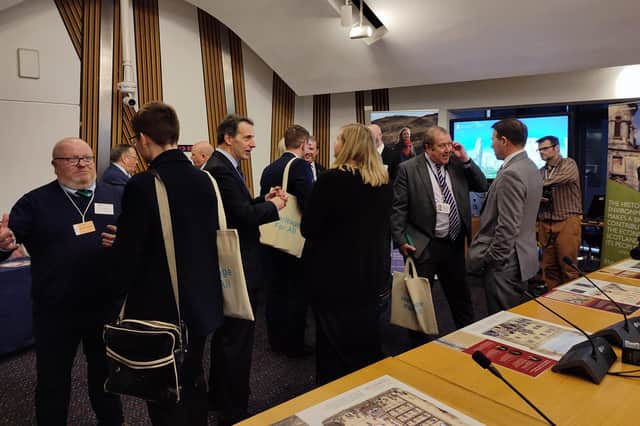Holyrood event explains role of history and heritage


The session was hosted by Historic Environment Scotland (HES), the lead public body that investigates, cares for and promotes Scotland’s historic environment, including more than 300 properties in care.
The event, ‘How Scotland’s Past Can Support Its Future’, helped to provide further information about the body’s work and the wider contribution made to Scotland by its historic environment, including how investment can drive economic recovery.
Advertisement
Advertisement
MSPs also had the opportunity to find out more about how HES is helping to tackle climate change and contributing with the journey to net zero as well as how it’s work benefits communities, with figures showing that the historic environment sector generated £4.4billion for Scotland’s economy in 2019 and supported 68,000 full-time equivalent jobs in heritage, tourism and construction sectors.
As many as 86% of people also reported a well-being benefit from their local heritage.
A fifth of Scotland’s residential buildings were constructed before 1919 using traditional materials and building skills. Making them as energy-efficient as possible is a crucial part of the move to net zero, as well as supporting opportunities for re-use and retrofit, and boosting the need for skilled labourers and craftspeople.
MSPs were also updated on progress on the high-level masonry inspections under way at properties to tackle the effects of climate change and other factors.
Advertisement
Advertisement
Mr Dey said: “I was delighted to host Historic Environment Scotland at the Scottish Parliament today and hear more about how the historic environment can help us deliver Scotland’s national and local priorities in every corner of the country.”
Alex Paterson, HES chief executive, added: “There is clear economic value in investing in the historic environment, with the reuse and adaptation of existing assets being integral to a net zero transition. I would like to thank Graeme Dey and all the MSPs who came to find out more about how Scotland’s past can support its future”.